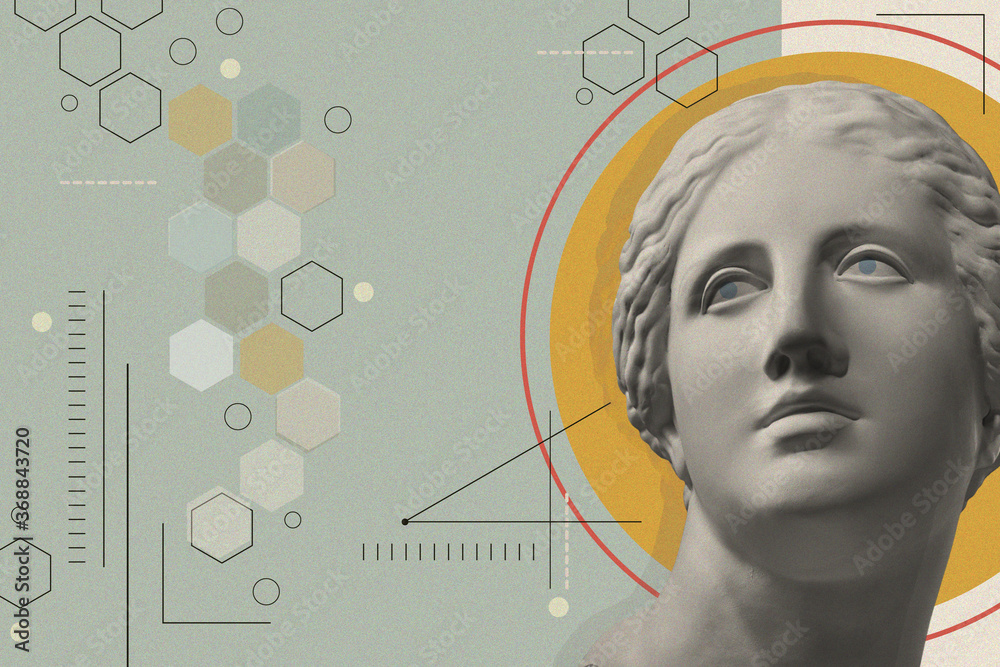In today’s digital world, establishing a strong online presence is vital for both businesses and individuals. With numerous digital platforms available, capturing and retaining user attention is challenging. This is where UI (User Interface) and UX (User Experience) design play a crucial role, creating engaging digital experiences.
UI and UX design shape user interactions with digital interfaces, going beyond aesthetics to influence navigation and user perception. By crafting intuitive interfaces and seamless experiences, designers attract users and foster loyalty.
These designs create experiences that resonate with users, guiding them effortlessly through content and enhancing usability. In a competitive digital landscape, prioritizing user-centric design principles can differentiate businesses, build trust, and drive growth.
UI and UX design are essential for digital success. Focusing on intuitive, user-friendly experiences helps attract users and foster lasting relationships that drive growth.
UI Design:

UI design focuses on creating visually appealing interfaces that facilitate smooth and intuitive user interactions. It deals with the aesthetic elements of digital products, such as layout, color schemes, typography, icons, and interactive components. The primary objective of UI design is twofold: to captivate users visually and to enhance usability and user satisfaction.
Visually appealing interfaces are essential because they catch users’ attention and make the overall experience more enjoyable. A well-designed interface not only looks good but also guides users through the platform effortlessly, helping them accomplish their tasks efficiently.
UI designers pay close attention to layout, ensuring that elements are arranged logically and consistently. Consistency in layout helps users navigate the interface with ease, as they can anticipate where to find specific features or information.
Color schemes and typography are chosen carefully to evoke the right emotions and convey information effectively. Colors can influence users’ perceptions and behaviors, while typography plays a crucial role in readability and conveying the brand’s tone and personality.
Icons and interactive elements, such as buttons and navigation menus, are designed to be intuitive and user-friendly. Clear and recognizable icons help users understand functionality at a glance, while well-designed interactive elements provide feedback and guidance as users interact with them.
Overall, UI design plays a vital role in creating engaging and visually appealing digital experiences that not only attract users but also keep them engaged and satisfied. It serves as the foundation upon which the entire user experience is built, making it a critical aspect of digital product design.
Key Elements of UI Design:
1.Visual Hierarchy: Imagine you’re leading someone through a page by highlighting the most important information first. It’s like putting a spotlight on key details to guide the user’s attention and make navigating easier.
2.Consistency: Consistency is like keeping a uniform look and feel across the entire interface. It’s about using the same colors, fonts, and layout styles so users know what to expect and feel comfortable navigating through the design.
3.Typography: This is all about choosing fonts and text styles that are easy to read and match the brand’s personality. It’s like selecting the right words and presenting them in a visually pleasing way to enhance readability and convey the brand’s identity.
4.Color Palette: Think of selecting colors like painting a picture that speaks to the audience. It’s about choosing colors that not only look good together but also represent the brand well and evoke the right emotions in users.
5.Responsiveness: Ensuring that the design works well on different devices and screen sizes is crucial. It’s like making sure that no matter where users access the interface, whether on a computer, tablet, or phone, they have a consistent and enjoyable experience without any glitches or awkward formatting issues.

Delving into UX Design:
UX design is all about ensuring that users enjoy a fantastic experience with a digital product from the moment they start using it until they finish. This involves getting to the core of what users want and need, as well as understanding how they interact with the product. The goal is to create something that’s not only easy and efficient to use but also enjoyable. It’s like crafting a journey where every step is smooth and pleasant, tailored to meet users’ needs and exceed their expectations.
Key Components of UX Design:
1.User Research:
This step involves collecting information about users, such as who they are, what they do, and what challenges they encounter. It’s akin to getting to know the people you’re designing for, understanding their needs, preferences, and behaviors to tailor the product accordingly.
2.Information Architecture:
This aspect focuses on organizing content in a way that makes it easy for users to locate what they’re seeking. Think of it as creating a map that guides users seamlessly through a website or app, ensuring they can find what they need without frustration.
3.Wireframing and Prototyping:
Before diving into the final product, designers create rough sketches or mockups to test ideas and concepts. It’s similar to creating a blueprint before constructing a building, allowing for experimentation and refinement before committing to the final design.
4.Usability Testing:
This involves presenting the design to real users and observing how they interact with it. Feedback gathered during usability testing helps identify areas for improvement, ensuring the final product meets user needs effectively. It’s like receiving feedback on a rough draft before polishing the final version of an essay.
5.Accessibility:
Ensuring that the design is accessible to everyone, including individuals with disabilities, is crucial. This involves adhering to specific guidelines and standards to guarantee that all users can access and enjoy the content. It’s akin to ensuring that everyone can enter and navigate a building comfortably, regardless of their physical abilities.

The Convergence of UI and UX Design
UI and UX design may seem like separate areas, but they actually work closely together to make digital experiences outstanding. A visually appealing interface (UI) is essential, but it’s only truly effective if it’s backed by a smooth and intuitive user experience (UX), and vice versa. Essentially, UI makes things look good, while UX ensures they work well and are easy to use. Therefore, to create successful digital products, both UI and UX design principles must come together seamlessly. It’s like having a delicious cake (UI and UX Design) with the perfect frosting – they’re both essential for a truly satisfying experience.
Best Practices for UI and UX Design:
1.User-Centric Approach: Always prioritize what users need and want. Think about their preferences and ensure the design reflects that. It’s like tailoring a suit to fit perfectly, making sure it’s comfortable and suits the wearer’s style
2.Clear Communication: Use simple and direct language to convey information. Ensure users understand what they’re seeing or reading without having to think too hard. It’s like having a conversation that everyone can easily follow, avoiding confusing jargon or complicated instructions.
3.Streamlined Navigation: Make it easy for users to find what they’re looking for. Design pathways that guide them smoothly through the interface without getting lost or confused. It’s like drawing a map with clear directions, ensuring users reach their destination without any detours.
4.Feedback Mechanisms: Provide visual and interactive cues to let users know their actions have been acknowledged. This keeps them engaged and informed about what’s happening. It’s like receiving a pat on the back that encourages users to keep going, confirming that they’re on the right track.
5.Continuous Iteration: Keep improving the design based on feedback and data. Don’t settle for the first version; instead, keep refining it to make it even better. It’s like polishing a diamond to make it shine brighter with each pass, continuously enhancing the user experience to meet evolving needs and expectations.
Wrapping up “UI and UX Design”
In the ever-evolving digital landscape, mastering the art of UI and UX design is not just a luxury but a necessity. These twin pillars stand as guardians, shaping the way users interact with and perceive digital products. By understanding and harnessing their power, we can elevate digital experiences to new heights.
UI design is the gateway to captivating users visually while enhancing usability and satisfaction. From layout to color palette, typography to interactive elements, every aspect is meticulously crafted to guide users seamlessly through the digital realm. Through consistency and attention to detail, UI design lays the foundation for an immersive and engaging journey.
Meanwhile, UX design takes the helm in ensuring that users embark on a meaningful and delightful voyage. By delving into user research, crafting intuitive navigation, and embracing accessibility, UX design fosters an environment where users feel valued and understood. It’s not just about functionality; it’s about creating an emotional connection that resonates with users long after they’ve clicked away.
Yet, the true magic happens at the convergence of UI and UX design. Like yin and yang, they complement each other, working in harmony to create exceptional digital experiences. A visually stunning interface falls flat without a seamless user experience, just as a flawless user journey is incomplete without visual appeal. Together, they form a symbiotic relationship that breathes life into digital products, transforming them from mere tools into immersive experiences.
As we navigate the complexities of the digital world, it’s essential to adhere to best practices. By adopting a user-centric approach, communicating clearly, streamlining navigation, providing feedback mechanisms, and embracing continuous iteration, we can ensure that our designs evolve alongside user needs and expectations.
In conclusion, mastering UI and UX design isn’t just about creating beautiful interfaces or seamless interactions; it’s about crafting experiences that leave a lasting impression. By harnessing the power of UI and UX design, we can elevate digital experiences, forging connections that transcend pixels and code, and ultimately, enriching the lives of users in ways we never thought possible.
Until next time explore webkeyz’s case studies
and Keep Thinking!








